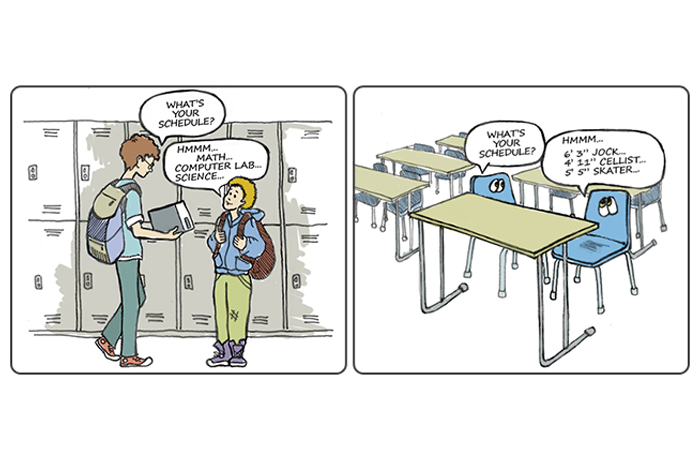
MoveMore Blog
The latest in workplace wellness

Mismatch of furniture and students leads to back pain
It’s one thing to hear that a large percentage of adults experience back pain on the job at a cost of billions of dollars in medical fees, drugs and lost time at work each year. We’ve come to expect back pain that stems from improper lifting techniques, engaging in “weekend warrior” activities and the simple act of growing older. But did you know that children suffer from back pain, and that the reports of this issue have been rising for at least a decade?
So what’s driving the rate of musculoskeletal disorders (MSDs) among our children?
While the many of the factors that contribute to back pain among adults also apply to young people, who face specific risks that should concern parents, schools and the medical community.
Children and adolescents spend a great part of their day at school sitting on chairs at desks that are the wrong size for their bodies. In addition, it is not uncommon to see a classroom filled with furniture that is mismatched. Chair seats are often too high or too low for the desk heights that they have been paired with. This isn’t to say that instructors are not sensitive to the dimensional differences of their students. But there is a noted lack of ergonomic guidance for educational institutions to depend on.
To complicate the matter further, children are more sedentary and less physically active than health professionals and government agencies recommend. The combination of too much sitting and poorly designed or misfitting furniture is a recipe for disaster in the form of MSDs. Case in point: deformation due to increased stress on spinal structures, as reported by multiple researchers.
In a recent ergonomics study by scientists at the University of Lisbon, 58% of children surveyed reported back pain at least one day during a three month period. (The cross-section of nearly 140 students ranged in age from 12 to 14.) Assessments of the furniture used by the children found that they were sitting on chairs and working at desks that were too high for them. The data also reflected that a large difference between desk height and elbow height was significantly associated with the occurrence of upper back pain. The discomfort lasted after the school day was over.
The researchers found that sedentary physical activity had a significant association with the occurrence of back pain in girls. Note that, as compared to the boys, the girls in this study did not practice the recommended 60 minutes per day of moderate physical activity and had a sedentary life style. And finally, as you might expect, the frequency of back pain was shown to increase with the ages of the children being studied.
Surprisingly, the researchers said the results showed no correlation between back pain and backpack weight or body mass index.
Regardless of the causes, and the complexity of their associations, students who experience fatigue and pain while at school are challenged to achieve their primary goal: focus to learn. Unfortunately, research has shown that the poor posture and activity habits described in these youths will follow them into adulthood when they will be even harder to break.
What is the answer? First, more research, but in the meantime, efforts should be made to limit exposure by focusing on the school environment. Ergonomic principles must be considered by administrators in order to minimize musculoskeletal problems that may result from unsuitable furniture design.
At a minimum, classroom furniture must fit the needs of children and adolescents at all stages of development from late elementary school through college. Better yet, it should be universal, adjustable, mobile and designed with input from children and adults, teachers and parents.
Take a look at our LearnFit standing desk and other efforts to support healthier classrooms and more engaged students.
Relevant Posts
Stay in the know
Sign up and get the latest and greatest content from JustStand's MoveMore blog.
